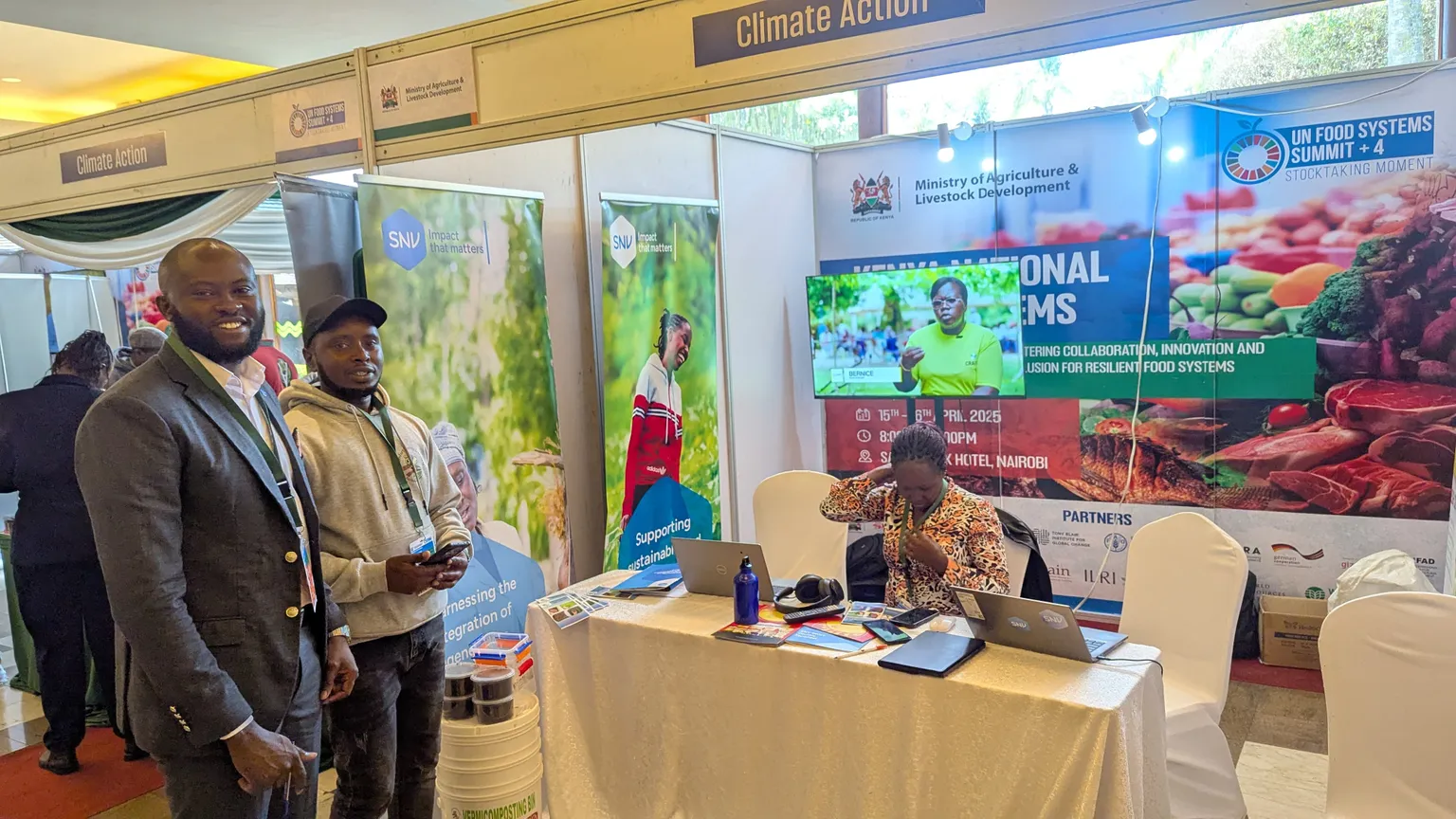Committed to sustainable agriculture and climate resilience
SNV reaffirms its continued commitment to promoting sustainable food systems at the Kenya National Food Systems Summit 2025 in Nairobi.

The recent Kenya National Food Systems Summit, held in Nairobi, convened a diverse group of food system stakeholders, including farmers, policymakers, private sector leaders, and development partners. This summit aimed to define a path towards a more resilient and inclusive food future. Just months before the UN Food Systems Summit+4 which will be hosted in Addis Ababa, the gathering served as both a progress report and a call to action, highlighting the progress, challenges, and opportunities in Kenya’s journey toward sustainable food security.
Achievements and pathways of action
At the heart of the discussions was the acknowledgement that Kenya’s food systems need to transform to tackle the interconnected challenges we face effectively. While the country has made notable strides, such as reducing childhood stunting from 26% to 18% over the past decade and increasing agricultural budget allocations to KES 77.7 billion, the triple burden of malnutrition, climate vulnerability, and systemic inequalities continues to undermine progress. The summit’s five action pathways offered a roadmap for transformation, each addressing critical pressure points.
Youth and women’s empowerment emerged as a recurring theme, with evidence showing that despite producing 60% of Kenya’s food, women face disproportionate barriers in accessing land and financing. Initiatives like the Youth Enterprise Development Fund, which has trained over 300,000 young agripreneurs since 2021, demonstrate the potential of targeted investments in human capital.
Technological innovation for climate resilience
Technological innovation was another focal point, reflecting Kenya’s unique position as a hub for agricultural digital solutions. For example, the government’s e-voucher system for farm inputs significantly reduces inefficiencies. Yet, as participants noted, these gains remain unevenly distributed, with smallholder farmers, who contribute 70% of Kenya’s food, often lacking the connectivity and digital literacy to benefit fully. This disparity highlighted the need for more inclusive tech deployment strategies that bridge urban-rural divides.
Perhaps the most urgent conversations centred on climate resilience. With 80% of agriculture reliant on increasingly erratic rainfall, the case for scaling agroecological practices has never been stronger. Field reports from counties like Turkana, where rangeland reseeding programs are restoring degraded pastures, provided tangible proof points. However, the slow uptake of climate-smart techniques highlights systemic barriers, particularly around financing. Here, the summit’s emphasis on innovative instruments like green bonds and blended finance models pointed toward potential solutions, though their success will hinge on private sector engagement.
Behind these technical discussions lay a fundamental philosophical shift: recognising food as a right rather than a commodity. This principle informed debates on nutrition, where, despite declining stunting rates, the simultaneous rise of obesity and micronutrient deficiencies reveals a food environment in transition. The proposed pivot toward nutrient-dense and climate-hardy indigenous crops like millet and sorghum reflects an emerging consensus that dietary diversity must be woven into agricultural policy.
Our commitment to changing food systems
SNV is at the forefront of catalysing transformative change in agriculture by advocating for robust government commitments to expand irrigation, digitise services, and facilitate regional knowledge-sharing. Drawing from our extensive experience in climate-smart and regenerative agriculture programming, SNV is well-positioned to significantly impact smallholder farmers' livelihoods. We will implement targeted interventions, invest in capacity-building initiatives, and develop innovative financing models that empower farmers to adopt sustainable practices, boost productivity, and foster resilience against climate shocks.
As the summit concluded, the path forward appeared both clear and complex. Government commitments to expand irrigation, digitise services, and lead regional knowledge-sharing offer a strong policy foundation. Yet persistent gaps in post-harvest infrastructure, youth disinterest in agriculture, and the looming threat of climate shocks remind us that systemic change requires more than technical fixes. It demands a reimagining of value chains, power structures, and our very relationship with the land. When Kenya’s delegation arrives in Addis Ababa later this year, these nuanced lessons may prove their most valuable export.
Of course, the true test lies beyond the conference halls. Will the partnerships formed and pledges made translate into tangible improvements for the smallholder farmer in Kakamega, the pastoralist in Marsabit, or the urban consumer in Nairobi’s informal settlements?